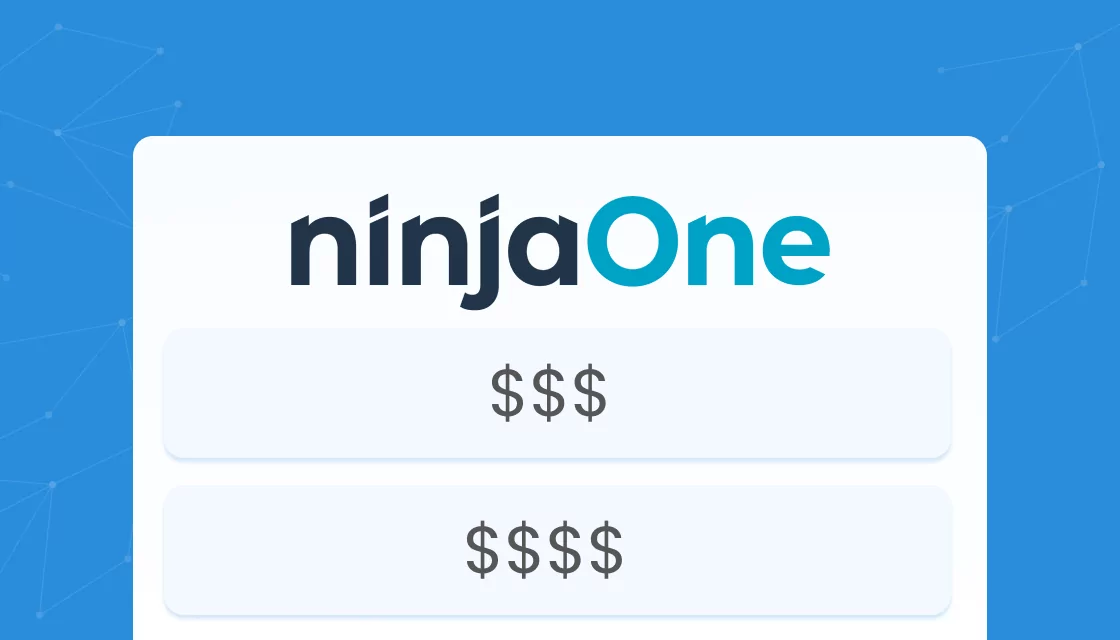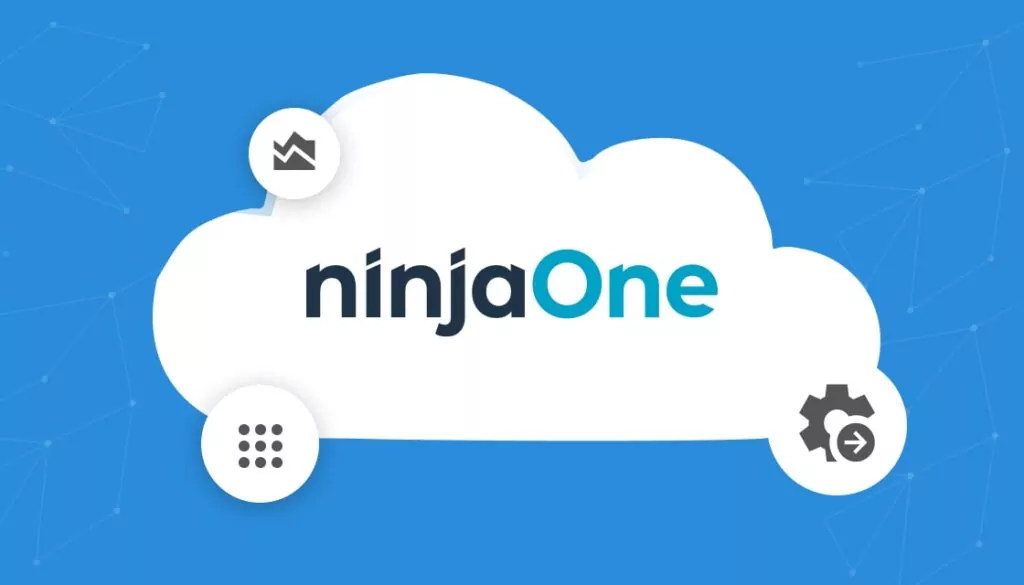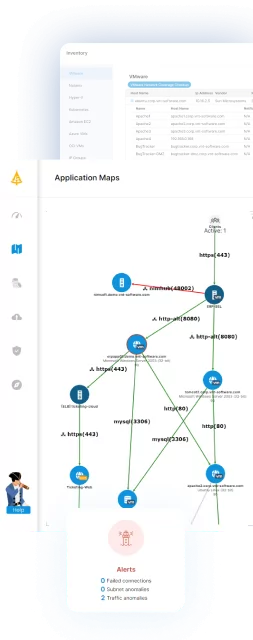What Is NinjaOne?
NinjaOne is a cloud-based IT management platform for managed service providers (MSPs) and IT departments. Initially known as NinjaRMM, it has evolved to offer a suite of tools for remote device management. Organizations use NinjaOne to monitor IT environments, maintain security, and automate IT processes.
Unlike traditional IT management systems, NinjaOne offers a simplified interface and features for integration into existing IT infrastructures. The platform aims to minimize downtime and reduce manual workloads for IT teams.
Table of Contents
ToggleKey NinjaOne Products
NinjaOne offers a suite of tools to support IT management.
Remote Monitoring and Management (RMM)
NinjaOne’s RMM solution allows IT teams to monitor, patch, and secure endpoints at scale. It features real-time device monitoring with automated alerting, enabling technicians to address issues before they impact end users. The platform includes automated patching for Windows, macOS, and Linux, along with third-party application updates.
IT teams can execute remote actions, deploy remediations, and initiate terminal sessions without interrupting users. Secure remote access options provide hands-on support, while endpoint task automation simplifies repetitive processes. The system also supports auto-remediation, allowing for condition-based script deployments to fix common endpoint issues automatically.
Endpoint Management
NinjaOne’s endpoint management centralizes control over devices, including workstations, servers, and virtual machines. It provides IT teams with real-time visibility, allowing them to manage devices from a single interface. The platform automates critical endpoint management tasks such as patching, software deployment, and configuration management.
IT teams can use form-based script deployment to execute custom scripts at scale. Secure remote access ensures quick troubleshooting, while flexible device reporting offers insights into hardware, software, and device performance. Auto-remediation capabilities help resolve common endpoint issues proactively.
Patch Management
NinjaOne’s patch management automates OS and third-party software updates across Windows, macOS, and Linux environments. The system includes a centralized patching dashboard that provides visibility into vulnerabilities and patch deployment status. IT teams can schedule updates, enforce preemptive patch approvals, and automate patch deployment workflows.
Cloud-based, agent-based patching allows organizations to secure remote and hybrid environments without requiring a VPN. Additional security features include vulnerability data integration, patch compliance reporting, and automated reboot management.
Backup
NinjaOne Backup provides cloud-based and local storage options to protect data from ransomware and IT failures. The solution supports Windows and macOS workloads, allowing organizations to store backups in an immutable cloud, on-premises, or both.
Features include chainless image backups for efficient storage, multiple restore options such as file restores and bare metal recovery, and self-service file recovery for end users. Security controls prevent unauthorized data deletion, while proactive alerting ensures IT teams can address backup issues before they lead to data loss.
Mobile Device Management (MDM)
NinjaOne’s MDM enables IT teams to manage and secure Android and Apple mobile devices alongside traditional endpoints. It supports remote device enrollment, policy enforcement, and mobile application management.
Security features include remote device lock and wipe, passcode enforcement, and geolocation tracking for asset protection. The platform also allows IT teams to configure devices in kiosk mode for dedicated business applications. Zero-touch deployment simplifies device provisioning for employees.
Ticketing
NinjaOne’s ticketing system simplifies helpdesk operations with automated workflows and integration with endpoint management. IT teams can create, prioritize, and route tickets based on predefined rules.
Technicians can take direct actions from within a ticket, leveraging real-time device data and remediation tools. Collaboration features such as @ mentions and shared activity feeds improve communication. A self-service client portal allows end users to submit tickets and access remote support tools.
IT Documentation
NinjaOne’s documentation solution centralizes IT knowledge, making it easier for teams to store and retrieve technical information. IT teams can create structured documentation using customizable templates and relationship mapping to link relevant assets, credentials, and workflows.
Security features include encryption, multi-factor authentication, and role-based access controls. The platform also supports automation for documentation updates, ensuring IT knowledge remains current. Runbooks and checklists standardize processes, improving technician efficiency and reducing errors.
Related content: Read our guide to IT mapping
Which Factors Determine NinjaOne Pricing?
NinjaOne uses a per-device pricing model, meaning costs are based on the number of endpoints where the agent is deployed. The platform follows a tiered pricing structure, offering volume discounts—so the more devices an organization manages, the lower the cost per device.
Additional integrations also affect pricing. NinjaOne offers bundled options with third-party tools like TeamViewer, Splashtop, Webroot, Bitdefender, Malwarebytes, and StorageCraft. These add-ons incur additional charges. Support does not incur additional costs.
Promotional offers and incentives further influence pricing:
- NinjaOne sometimes provides discounts through quarterly promotions, rebates, and referral incentives.
- Organizations willing to commit to a multi-month contract may also receive a lower rate.
- Early adopters who joined NinjaOne in its initial stages continue to benefit from their original pricing.
Typical Pricing for NinjaOne
NinjaOne does not publicly list its pricing on its website, and it is available upon request. A free trial is available to try out the solution.
According to information shared by Vendr:
- Costs typically range between $2–$4 per endpoint, with discounts available for larger deployments.
- On average, organizations spend around $8,150 per year, with total costs falling between $1,500 and $19,000.
- Organizations managing 50–100 endpoints can expect pricing around $3.50–$4 per endpoint.
NinjaOne Limitations
When evaluating NinjaOne, you should be aware of the following limitations, as reported by users on the G2 platform:
- Limited alert customization: The alert system lacks granularity, making it difficult to fine-tune notifications based on different conditions.
- Pricing transparency: NinjaOne does not publicly disclose its pricing, requiring organizations to engage with sales representatives for quotes.
- Customer support structure: All support tickets start at Tier 1, even for experienced users who may need advanced troubleshooting. Additionally, there is no premium support option for direct access to senior engineers.
- Ticketing system improvements needed: The built-in ticketing system is relatively new and lacks deep integrations with collaboration tools like Microsoft Teams and Slack.
- Software deployment limitations: The platform does not provide an easy way to customize software deployment for groups. It follows an “all or nothing” approach, limiting flexibility.
- Patch failure details: When a patch or application deployment fails, users may receive minimal information, making troubleshooting more difficult.
- Policy management constraints: Users cannot apply multiple policies simultaneously, which complicates staging updates unless devices are organized into separate groups.
- Installer expiration issue: The installer file and deployment link expire after a set time. This creates challenges for automated deployment methods, requiring frequent updates to prevent installation failures.
- Slow feature development: While NinjaOne introduces new features regularly, some users feel the development process is slow, and beta features may later require an additional cost.
Related content: Read our guide to NinjaOne alternative
Faddom: Ultimate NinjaOne Alternative
While NinjaOne offers various IT management capabilities, gaining visibility into the dependencies and changes across your IT environment can still be a challenge. This is where Faddom comes in.
Faddom provides real-time, agentless application dependency mapping that gives IT teams a continuous and up-to-date view of their infrastructure. Rather than relying on static records and manual updates, Faddom automatically discovers servers, applications, and their dependencies. This helps IT teams enhance security, ensure compliance, and optimize resources.
For IT managers looking for more than just monitoring, Faddom offers comprehensive visibility into hybrid environments, automatic dependency discovery for better change management, optimized resource allocation for cost savings, improved security through real-time anomaly detection, and quicker audits for compliance readiness.
And the best part? Faddom deploys in under 60 minutes with no agents and no disruptions.
Want to see it in action? Schedule a call with our experts today!


